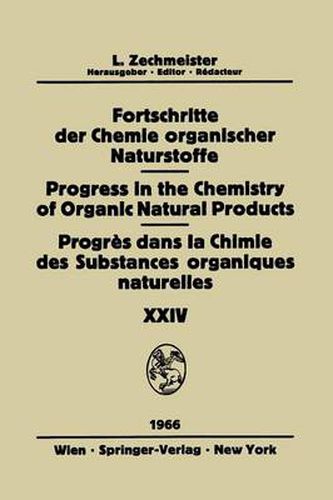Readings Newsletter
Become a Readings Member to make your shopping experience even easier.
Sign in or sign up for free!
You’re not far away from qualifying for FREE standard shipping within Australia
You’ve qualified for FREE standard shipping within Australia
The cart is loading…






This title is printed to order. This book may have been self-published. If so, we cannot guarantee the quality of the content. In the main most books will have gone through the editing process however some may not. We therefore suggest that you be aware of this before ordering this book. If in doubt check either the author or publisher’s details as we are unable to accept any returns unless they are faulty. Please contact us if you have any questions.
During the past three decades the organic chemist has become in- creasingly used to take advantage of more and more complex instrumenta- tion and physical measurements in lieu of laborious, time-consuming and often ambiguous chemical transformations. Mass spectrometry is perhaps the most recent, most complex and most expensive addition to this field. In view of the astonishingly quick acceptance of nuclear magnetic reso- nance by the organic chemist it is, in retrospect, surprising that he has neglected mass spectrometry for such a long time. This can be explained, in part, by the complexity of the instrumentation and some technical shortcomings of the earlier commercially available instruments but, to an even greater extent, it reflects also the prejudices against a technique that was originally mainly used for quantitative gas analysis. The usefulness of mass spectrometry as a qualitative technique in organic chemistry rather than a tool for quantitative analysis was more and more recognized towards the end of the last decade. A rather spectacular development followed during the intervening few years to the point that now any reasonably well equipped modern organic laboratory is supplied with, or at least has access to, one or more mass spectrometers suitable for work on organic compounds. Within the realm of organic chemistry the technique has become much more important, if not indispensable, for the natural products chemist while its application to synthetic problems is much less pro- nounced.
$9.00 standard shipping within Australia
FREE standard shipping within Australia for orders over $100.00
Express & International shipping calculated at checkout
Stock availability can be subject to change without notice. We recommend calling the shop or contacting our online team to check availability of low stock items. Please see our Shopping Online page for more details.
This title is printed to order. This book may have been self-published. If so, we cannot guarantee the quality of the content. In the main most books will have gone through the editing process however some may not. We therefore suggest that you be aware of this before ordering this book. If in doubt check either the author or publisher’s details as we are unable to accept any returns unless they are faulty. Please contact us if you have any questions.
During the past three decades the organic chemist has become in- creasingly used to take advantage of more and more complex instrumenta- tion and physical measurements in lieu of laborious, time-consuming and often ambiguous chemical transformations. Mass spectrometry is perhaps the most recent, most complex and most expensive addition to this field. In view of the astonishingly quick acceptance of nuclear magnetic reso- nance by the organic chemist it is, in retrospect, surprising that he has neglected mass spectrometry for such a long time. This can be explained, in part, by the complexity of the instrumentation and some technical shortcomings of the earlier commercially available instruments but, to an even greater extent, it reflects also the prejudices against a technique that was originally mainly used for quantitative gas analysis. The usefulness of mass spectrometry as a qualitative technique in organic chemistry rather than a tool for quantitative analysis was more and more recognized towards the end of the last decade. A rather spectacular development followed during the intervening few years to the point that now any reasonably well equipped modern organic laboratory is supplied with, or at least has access to, one or more mass spectrometers suitable for work on organic compounds. Within the realm of organic chemistry the technique has become much more important, if not indispensable, for the natural products chemist while its application to synthetic problems is much less pro- nounced.